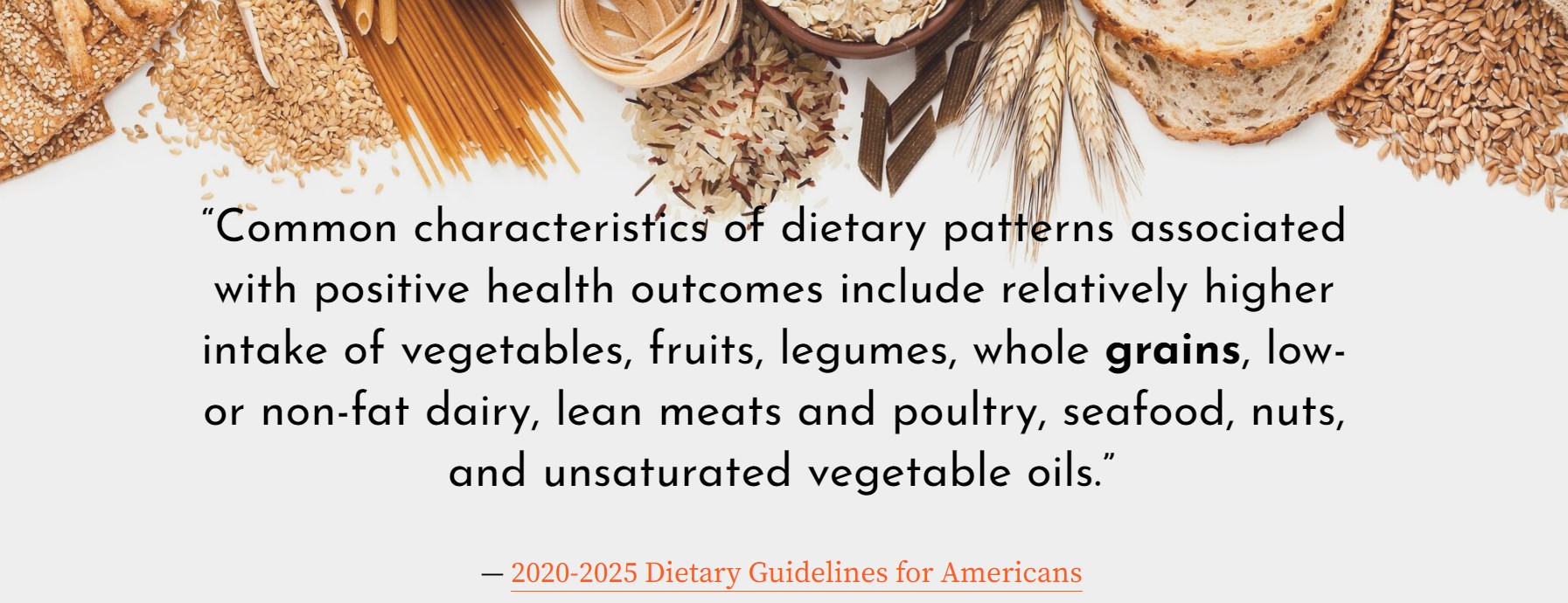U.S. Government Confirms Grains are Important to Good Nutrition
The U.S. Grain Chain, a farm to fork coalition of stakeholders in the grain industry chaired by the American Bakers Association (ABA), is celebrating the recommendation published Dec. 29, 2020, in the 2020-2025 Dietary Guidelines for Americans (DGAs) to “consume half of your grains from whole grain sources” and the remainder from enriched grains. A foundational piece of the DGAs, the guidelines recognize whole grains are “one of the three food groups that are fundamental constituents of a healthy dietary pattern.”
The United States Department of Agriculture (USDA) and Health and Human Services (HHS) oversee and publish the Dietary Guidelines, the cornerstone of all Federal nutrition policy and nutrition education guidelines. The guidelines shape consumer health decisions and doctor recommendations.
Of importance, the DGAs maintained the existing recommendation for the average healthy American adult to consume six one-ounce (28.4 gram) servings of grain foods daily, with half of those servings coming from whole grains.
For the first time, the DGAs included recommendations for birth to two years. The Grain Chain applauded the recognition of grains as one of the traditional, nutritious first foods for infants. Numerous research studies have demonstrated significant, positive effects of nutrient absorption, improved nutrition quality, and overall wellness from enriched grains at various life stages.

Source: www.gograins.org.
The key takeaways from the 2020-2025 Dietary Guidelines for Americans for the grains-based foods industry:
- Grains, both enriched and whole, play a key role in healthy dietary patterns and diet quality;
- Grains are a significant contributor of dietary fiber, a generally under-consumed nutrient for Americans;
- Grains contribute to overall diet quality through key essential nutrients;
- Grains are a delicious, versatile, affordable, and sustainable plant-based food;
- Enrichment and fortification of grains are key contributors to positive public health impacts.
Since folic acid fortification of enriched grain foods became required in 1998, the prevalence of babies born with neural tube defects (NTDs) has decreased by 35% in the United States, leading the Centers for Disease Control & Prevention (CDC) to name folic acid fortification of enriched grains one of the top 10 public health achievements of the first decade of the 21st century.
The DGAs included guidance on enriched grains, maintaining the existing recommendation of three one-ounce servings of enriched grains daily. While the guidelines cite science-backed evidence of positive health outcomes from the inclusion of enriched grains, the Grain Chain is extremely concerned to see the DGAs include contradictory language linking “refined grains” with poor dietary patterns and health outcomes.
Published scientific research clearly and unequivocally illustrates the key roles of grains – both enriched and whole – in healthy dietary patterns and their significant contributions to diet quality. To clarify and correct potential consumer confusion resulting from this contradictory language, the members of the Grain Chain look forward to partnering with the USDA and HHS to help educate the public on the value of both enriched and whole grains.

Source: www.gograins.org.
More information about grains can be found at GoGrains.org.


